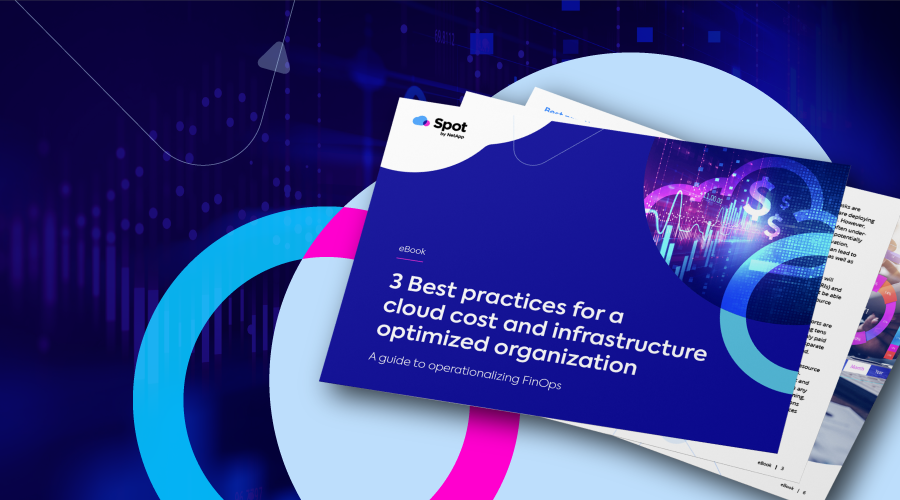
Management of cloud costs is a business imperative. Many organizations are embracing cloud financial operations, or FinOps, to help them reduce and manage cloud spend. Typically, at least initially, FinOps practitioners focus on gaining a picture of their cloud environment and the associated cost of their cloud resources. They then utilize these reports to implement cost-cutting measures, such as right-sizing instances, removing unused resources, adjusting instance uptime, or purchasing commitment plans.
However, the benefits of focusing solely on cloud cost management tactics are no longer enough in the changing landscape of cloud operations. While they may cut cloud costs in the short term, this approach cannot scale to support the long-term growth and efficiency goals of the business.
Read on for why focusing on cost management for your FinOps strategy is not enough and discover what you need to do to overcome these obstacles.
1. Overlooking the symbiotic relationship between cost and infrastructure
Many organizations overlook the direct correlation between cloud costs, usage and allocation of infrastructure resources. Yet changes in infrastructure, such as scaling resources up or down, have a direct impact on spend, as well as application performance and reliability. Conversely, fluctuations in cost may influence decisions regarding the allocation and optimization of infrastructure components.
2. Relying on manual analysis
Cloud vendor billing reports are incredibly complex, detailed, and long — often spanning tens of millions of lines. To analyze costs, experienced, highly skilled, and highly paid analysts often must comb through vast quantities of disparate cloud data, only to gain a partial snapshot of cloud spend.
Moreover, each cloud provider has its own portfolio of resource types, pricing models and tiers, and purchasing packages, so attempting to analyze the different and inconsistent hodgepodge of entities for each cloud is extremely time-consuming and prone to error. As a result, the cost reduction measures taken based on this analysis, such as removing idle resources or buying certain types of reserved instances (RIs) may be misguided or out of date.
3. Limited visibility
The sheer scale and complexity of today’s multi-cloud environment make it extremely difficult to gain holistic visibility and be able to accurately plan, manage, and optimize cloud spend and resources. And relying on a point-in-time siloed view with little intelligence on the resources and how they are used makes it nearly impossible to make informed long-term cost management decisions or provide ROI metrics.
4. Financial lock-in
To cut spend, many organizations will purchase commitments such as Reserved Instances (RIs) and Savings Plans. However, with this lock-in they may not be able to offload their commitments if business plans or resource usage changes. Rapidly changing market conditions and the release of new commitment types from cloud providers can further exacerbate the risks and limit savings opportunities. While RIs, Savings Plans, and other commitments can reduce cloud costs when applied correctly, they require strategic, forward-thinking planning and continuous optimization to maximize discounts.
5. Friction with DevOps
Most cost management tasks are typically implemented by the DevOps teams who are deploying the cloud resources that are generating the spend. However, imposing cloud cost management tasks on these often under-resourced and overstretched DevOps teams—and potentially requiring them to compromise on application innovation, performance, and reliability to lower cloud costs—can lead to friction and frustration and hamper time to market as well as divert their focus from innovation.
Evolve beyond cost management to truly gain value from your FinOps practice
Given the scale and complexity of the average organization’s cloud environment, not to mention the interdependence between cloud costs and infrastructure, organizations need a more strategic, more proactive, and agile approach that goes well beyond cost management to deliver long-term value to the organization.
Organizations need a solution that delivers continuous multi-cloud viability, together with continuous cost management and continuous infrastructure optimization – all driven by smart automation. With such a solution, they can drive greater cost savings together with resource and process efficiencies that can support business growth in today’s dynamic business environment.
Learn how three interconnected best practices – continuous visibility, continuous cost optimization, and continuous cloud infrastructure optimization – are critical to operationalizing FinOps to drive maximum value from your cloud investments.


